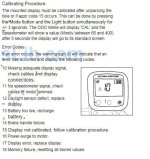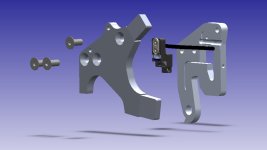ioniamichael
1 mW
- Joined
- Nov 28, 2017
- Messages
- 16
fechter said:That looks like a great meter (nicer than some of mine).
The trick is to make contact with the lines running from the motor connector up to the display unit. The pins on the connector are very small and easy to short. If there is another connector further up the line, it might be easier to probe.
What I do for those connectors is to find a short length of skinny solid wire that fits into the socket and twist the other end around the tip of the (red) probe, maybe with some tape. The black probe needs to go to the fat black wire on the motor power connection, but the connector has to be connected. Same trick with the skinny wire works if you wrap the end around the prong on the connector, then plug it in. Everything is referenced to the fat black wire (battery negative).
Then with the skinny wire connector unplugged, power up and measure the voltage on each pin. We can go from there.
Thank you very much for the answer, tomorrow I'll check it out and tell you.
From what I understood, my bike has a torque sensor , NOT PAS .
Thank you again



